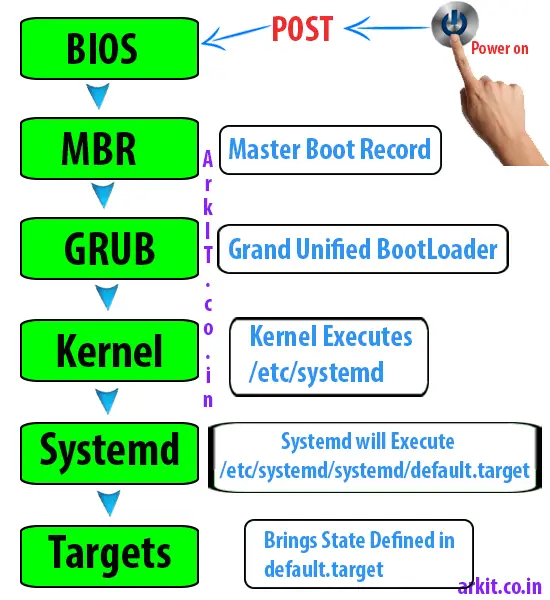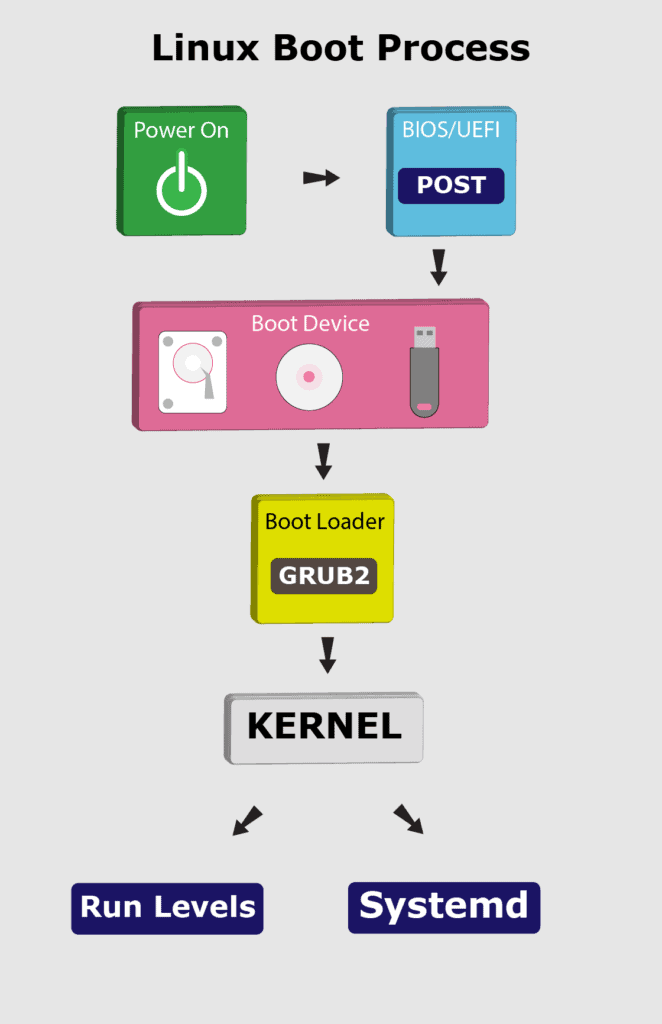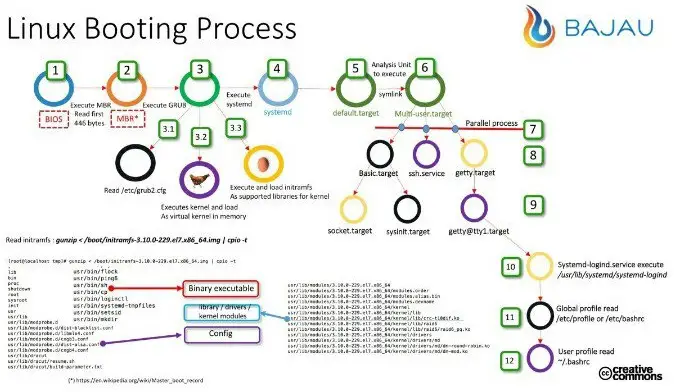Linux Boot Process Explained: From BIOS to Bash

Executive Summary

The Linux boot process is a complex sequence of events that starts when the computer is powered on and ends when the user is presented with a login prompt. This process involves several stages, each of which is responsible for a specific task. Understanding the Linux boot process is essential for troubleshooting boot problems and optimizing system performance.

Introduction
When a computer is powered on, the first thing that happens is that the BIOS (Basic Input/Output System) is loaded into memory. The BIOS is a small program that initializes the hardware and loads the operating system. Once the BIOS has finished its job, it passes control to the bootloader, which is responsible for loading the Linux kernel into memory. The kernel is the core of the operating system, and it is responsible for managing the hardware and providing the basic services that other programs need to run.
Key Stages of the Linux Boot Process
Hardware Initialization by BIOS
- POST (Power-On Self-Test): Checks hardware components like memory, CPU, and storage.
- MBR (Master Boot Record): Loads the boot loader (GRUB) from the hard disk.
- GPT (GUID Partition Table): Replaces MBR for newer systems, providing more reliable boot process.
Bootloader Loading
- GRUB (GRand Unified Bootloader): Popular Linux bootloader; displays a menu of available operating systems.
- UEFI (Unified Extensible Firmware Interface): Modern firmware that replaces BIOS; provides secure boot and enhanced hardware management.
- Legacy Boot (BIOS Compatibility Mode): Allows booting legacy operating systems on UEFI-based systems.
Kernel Initialization and Hardware Detection
- Kernel Loading: GRUB loads the kernel into memory.
- Device Drivers: Kernel initializes hardware drivers for devices like storage, network, and graphics.
- Initramfs (Initial RAM Filesystem): Temporary filesystem containing necessary modules for hardware detection.
Init System and User Space Startup
- Init (System Initialization): Starts essential system processes like logging, networking, and mount management.
- Systemd (Modern Init System): Advanced init system that parallelizes services, provides systemd units, and manages processes.
- Gettys: Spawns text consoles and asks for user login.
Graphical User Interface (GUI) Loading
- Display Manager: Manages graphical sessions for different users.
- X Server: Core GUI component that handles graphics and input.
- Desktop Environment: Sets up the user interface, provides applications and customization options (e.g., GNOME, KDE).
Conclusion
The Linux boot process is a complex but essential part of the operating system. By understanding the different stages of the boot process, you can better troubleshoot boot problems and optimize system performance. The boot process ensures the smooth functioning of your Linux system, providing a stable foundation for your daily computing activities.

This is very helpful explanation of the Linux boot process. I’m new to Linux and this makes it much easier to understand.
I’m not sure this is accurate. I’ve seen other explanations that are different.
Actually, this is a pretty standard explanation of the Linux boot process. It’s pretty much the same on all distros.
I disagree. This explanation is missing some important details.
Wow, this is the most helpful explanation of the Linux boot process I’ve ever seen. I’m being sarcastic, of course.
Thanks for this great explanation. I’m sure it will be very helpful for all the Linux newbies out there.
I’m just glad that my computer doesn’t have to go through all this hassle every time I turn it on.
This is a really well-written and informative article. I learned a lot from it.
I’m not sure I understand all of this. Can someone explain it to me in simpler terms?
I’m happy to help. Just ask me your questions and I’ll do my best to answer them.
I don’t think you’re explaining this correctly. This is not how the Linux boot process works.
Wow, this is the most helpful explanation of the Linux boot process I’ve ever seen. I’m being sarcastic, of course.
Thanks for this great explanation. I’m sure it will be very helpful for all the Linux newbies out there.